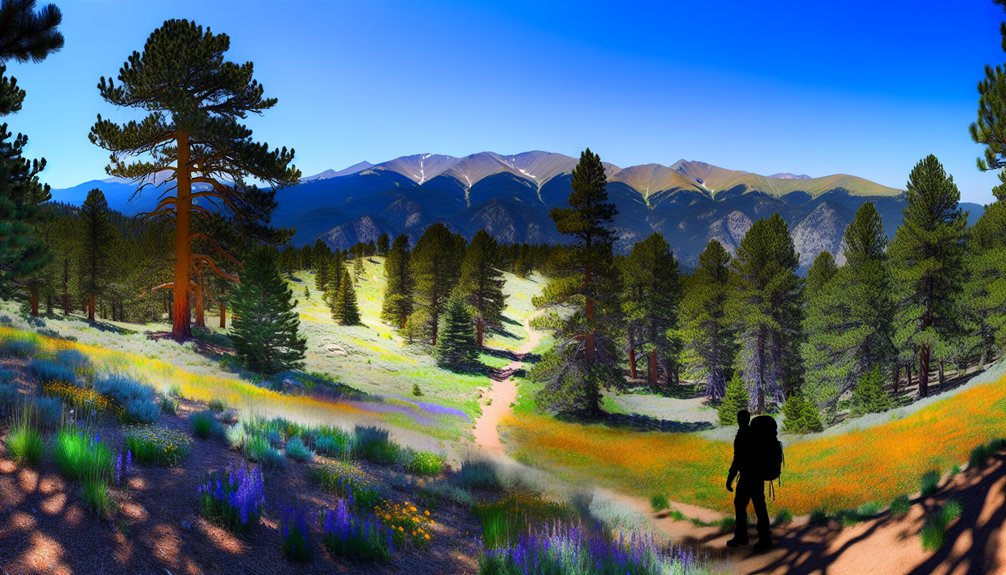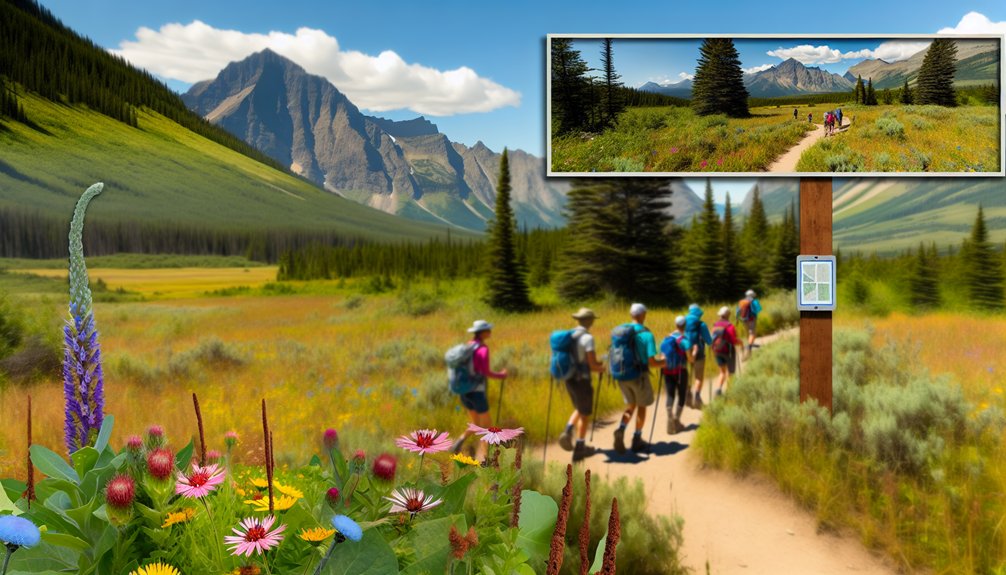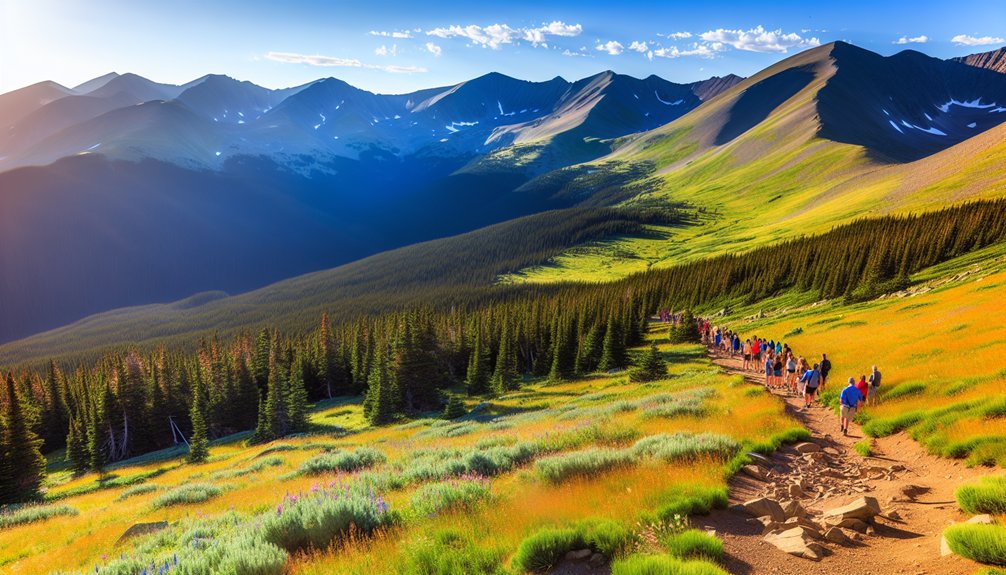When exploring the hiking trails near Denver, you might wonder what factors lead to their approval. Local governments consider community input, safety measures, and environmental impacts during the decision-making process. Each trail undergoes a thorough evaluation to ensure it meets certain criteria. But what specific elements influence these approvals, and how do they balance accessibility with conservation? Let’s take a closer look at the intricate process behind these popular outdoor spaces.
Top Hiking Trails to Explore Near Denver

When you’re looking to escape the city and immerse yourself in nature, the top hiking trails near Denver offer stunning views and diverse landscapes.
Consider the iconic Mount Bierstadt, where you’ll conquer a challenging ascent and be rewarded with breathtaking panoramas.
Alternatively, the Flatirons in Boulder showcase striking rock formations and scenic vistas, perfect for a quick day hike.
If you prefer a more leisurely stroll, check out the serene Cherry Creek Trail, where you can enjoy a peaceful walk along the creek.
For those seeking alpine beauty, the trails in Rocky Mountain National Park are a must.
Each trail provides unique experiences, ensuring you’ll find the perfect adventure just a short drive from the city.
Happy hiking!
Factors Influencing Trail Approval

Several factors influence the approval of new hiking trails near Denver, shaping the outdoor experience for hikers.
Local government agencies assess the demand for new trails, considering how many people might use them. They also evaluate the accessibility of the proposed locations, ensuring they’re easy for hikers to reach.
Community input plays a significant role, as feedback from residents can sway decisions. Safety is another critical factor; planners must ensure trails are safe and minimize risks.
Additionally, funding availability affects the approval process, as budget constraints can delay or halt projects.
All these elements combine to create a comprehensive assessment, helping decision-makers shape the future of hiking in this beautiful region.
Environmental Considerations for Hiking Trails

While planning new hiking trails, environmental considerations are crucial to preserving the natural landscape. You’ll want to assess the impact on local wildlife, vegetation, and ecosystems.
Protecting habitats means choosing routes that minimize disturbance to sensitive areas. It’s vital to avoid trails that could lead to soil erosion or damage to water sources. By incorporating sustainable practices, you can help maintain the area’s natural beauty.
Additionally, consider implementing measures like signage to educate hikers on responsible trail use and Leave No Trace principles. Engaging with local communities and environmental organizations fosters collaboration, ensuring that trail development aligns with conservation goals.
Ultimately, your thoughtful planning can create a balance between outdoor recreation and environmental stewardship.
Accessibility and Trail Maintenance
Ensuring hiking trails are accessible to all users is essential for promoting inclusivity and maximizing enjoyment of the outdoors. You’ll find that well-maintained trails not only enhance the hiking experience but also encourage a diverse range of visitors.
Accessible features, such as proper signage, smooth pathways, and resting areas, make it easier for everyone to explore nature.
Regular maintenance plays a critical role in this accessibility. Keeping trails clear of debris, repairing erosion, and ensuring adequate drainage helps prevent hazards and enhances safety.
You can contribute by reporting any issues you encounter during your hikes. Together, we can foster a welcoming environment, ensuring that these beautiful trails remain enjoyable for all, regardless of ability or experience level.
Popular Hiking Destinations in the Rockies
When you think of hiking in the Rockies, iconic destinations like Rocky Mountain National Park and Mount Evans come to mind, each offering stunning vistas and diverse trails.
At Rocky Mountain National Park, you can explore trails like Bear Lake, showcasing breathtaking alpine lakes and wildflowers.
Mount Evans, accessible via the highest paved road in North America, invites you to hike the challenging summit trail for panoramic views.
Other popular spots include the Flatirons in Boulder, where you’ll find unique rock formations and rewarding vistas.
Don’t forget about Golden Gate Canyon State Park, which offers a mix of forested trails and open meadows.
Each destination provides a unique experience, perfect for both beginners and seasoned hikers alike.
Community Involvement in Trail Development
As communities around Denver embrace the outdoors, local involvement in trail development has become essential for creating accessible and sustainable hiking options.
You can play a vital role by attending community meetings, voicing your opinions, and collaborating with trail organizations. By sharing your experiences and preferences, you help shape the trails to meet everyone’s needs.
Volunteer opportunities also abound, from trail maintenance to educational programs, allowing you to connect with like-minded outdoor enthusiasts.
Engaging with local government and parks departments fosters transparency, ensuring everyone’s voice is heard.
Ultimately, your participation not only enhances the hiking experience but also strengthens community bonds, making the trails safer and more enjoyable for all.
Safety Regulations for Hikers
Community involvement in trail development sets the stage for creating safe outdoor experiences.
To ensure your safety while hiking, it’s crucial to follow local regulations and guidelines. Always stick to marked trails; wandering off-path can lead to hazardous situations. Check the weather before heading out and dress appropriately—layering can keep you comfortable. Carry enough water and snacks to stay energized during your trek. Familiarize yourself with trail difficulty levels and know your limits.
Additionally, be aware of wildlife rules, like keeping a safe distance from animals. Inform someone of your plans and expected return time.
Wildlife Conservation Efforts Along Trails
While exploring the newly approved hiking trails near Denver, you’ll likely encounter various wildlife species that call this region home.
To protect these creatures, conservation efforts are in place along the trails. You’ll find informative signs highlighting local wildlife, teaching you about their habitats and behaviors. Trail construction prioritizes minimal disruption to ecosystems, ensuring animals can thrive without interference.
Moreover, designated viewing areas allow you to appreciate wildlife without encroaching on their natural spaces. Local organizations often host clean-up events, encouraging hikers like you to participate in keeping these habitats pristine.
Scenic Views and Unique Features of Approved Trails
Exploring the approved hiking trails near Denver offers not just a chance to spot local wildlife but also breathtaking scenic views and unique features that make each trek memorable.
You’ll find trails winding through majestic forests, where towering pines create a natural canopy above. As you climb higher, panoramic vistas of the Rockies unfold, painting a stunning backdrop for your adventure.
Unique geological formations, like ancient rock outcrops and shimmering lakes, punctuate your path, offering perfect photo opportunities. Some trails even lead to hidden waterfalls, where you can pause and soak in the tranquility.
With every turn, you’ll discover the beauty of nature and the diverse landscapes that make these trails truly special. Each hike promises an unforgettable experience.
Year-Round Hiking Opportunities in Denver
Whether you’re seeking a brisk winter hike or a summer stroll, Denver’s hiking trails offer year-round opportunities to enjoy the great outdoors.
In the winter, you can embrace the snow-covered landscapes on trails like Bear Creek or Mount Falcon, where the views are breathtaking and the air is crisp.
As spring arrives, wildflowers bloom, and trails such as Cherry Creek State Park come alive with color and activity.
During the summer months, explore the lush greenery of the Flatirons or venture into the foothills for shaded paths.
As fall sets in, the changing leaves provide a stunning backdrop on trails like Eldorado Canyon.
No matter the season, there’s always a perfect trail waiting for you in Denver.
Conclusion
In conclusion, the approval of hiking trails near Denver hinges on a blend of community support, safety measures, and environmental considerations. By understanding these factors, you can appreciate the effort that goes into creating accessible and sustainable outdoor experiences. Whether you’re seeking scenic views or wildlife encounters, these trails offer something for everyone. So, lace up your hiking boots, explore the stunning Rockies, and enjoy the incredible natural beauty that surrounds Denver year-round!


